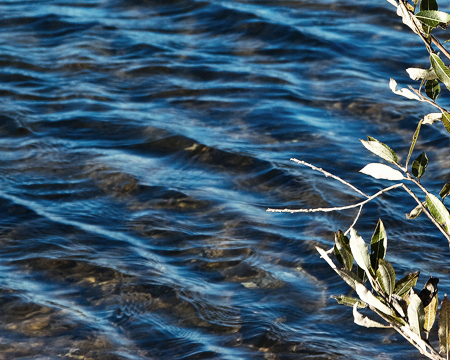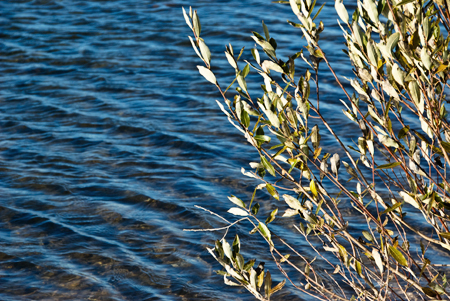First, I tried painting this body of water:
However, the waves looked like worms. I painted over my worms
I decided that I needed to meditate on moving water. After cropping the original, I printed out the following picture:

Look the lovely MOVING EDGES:



Birgit,
The edges are indeed astonishing: some are linear, as if someone took the end of a brush and dragged it across the scene. Some are blended, like classic nineteenth century art, some are abrupt. The value changes, all within the same hue, are almost infinite. The variety of edges amazes me.
Now, do we get to see your painting(s)?
I have a draft of a post ready, but before I publish it I’d love to peek at what you’ve done and hear the responses of others to these glories. I would warn you, though, that painting takes both ideas (and meditations) and craft; my biggest complaint is that even when I see well (having meditated well), I still have trouble with brush, paint, and color.
If you can craft this in paint as well as you have done with the photos, well, maybe I’ll give up painting altogether! Or at least never try water again.
June,
Please go ahead with your post, and everyone will have their own way of portraying water.
Now, do we get to see your painting(s)? Torn between painting and learning my new point-and-shoot Leica for Thanksgiving indoor photography.
Birgit:
The better, then, to depict indigestion?
I am thinking of capturing child motion for my AP overlays.
Birgit,
I have always found photographs to be sort of incompatible with making my own paintings. The “standards” by which we might come to judge our paintings can’t be those by which we judge a photo — and yet, the comparison, for me, can be instantly disruptive because I tend to take the photo as a kind of standard. I have started using “reference” photos — many deliberately badly composed– so I don’t get too disrupted by the quality of the photo and photographic standards.
That said, I am also lusting after your reflections above, wondering if I could attempt an imitation that wouldn’t look paltry in the face of the photo. I think I need to stick to street scenes.
June,
This reminds me of something that my memory attribute to Tracy Helgeson. She (?) prefers the photos from which she paints to be of poor quality so that she can let her imagination play.
I expect to eventually arrive at some level of abstraction after I understand flow of water as well as you understand street scenes.
Birgit,
It may amuse you to know that my painting buddy has had a desire to be by the water, so for the last 3 Fridays we have painted at the Willamette River. I have now 5 inadequately rendered versions of bridges and water and buildings — nary a street among them. My water always is a sort of bad impressionistic blob, with nothing of the elegance of your photo.
Last Friday I set myself to the task of doing an oil on board, using 2/3 of it for water. The color is nice and I guess you can tell it’s water — I guess
It’s in light of these experience that I may be a bit more aware than usual of the difficulties of depicting the miracles of rhythm and variation of your waves.
June,
Visiting a friend today, we looked at water paintings. Some impressionist’s (Monet) water was a boring decorative pattern. Hopper’s water seemed solid giving the impression that one would hurt oneself falling into it. Corot’s and Sargent’s water looked much better. Tempted to fly to London to study Turner.
Learning to depict people, artists use models that hold still. I don’t see how one can learn to paint streaming water without immobilizing it as a photograph.
Birgit,
I highly recommend flying to London to study Turner. Can I come too?
I am such an amateur painter. I admire you guys